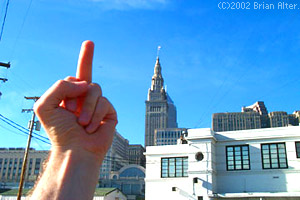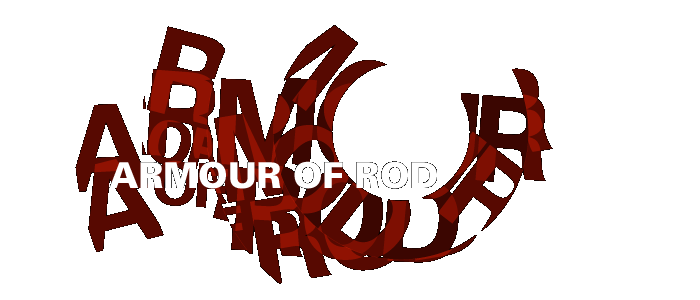
(Photo by courtesy of Brian Alter.)
The city of Cleveland, Ohio is poised to spend $200,000,000 on what they’re calling the “Euclid Corridor project”—a bus/trolley hybrid running down a tarted-up Euclid Avenue. In other words, to anyone objective who has been there in the last 40 years, good money after bad. The city of Cleveland is never coming back to life no matter how much money they throw at it.
A decade ago they built a new baseball/basketball stadium to bring more traffic downtown, which temporarily infused income into a handful of restaurants which closed as soon as the baseball team resumed its habit of losing. The powers that be were counting on the Trix Rabbit-like addiction of local sports fans who haven’t cottoned on to the fact that it’s all fixed to linger downtown indefinitely, but no one in this demographic has that kind of money to spend. (The shrapnel is that on game days, downtown office workers are expected to pay $20 event parking; no one in this income bracket should ever have to pay to park to go to work, ever.)
Dressing up Euclid Avenue isn’t a realistic answer when looking at the big picture. The city is structurally corrupt. “Man’s oldest dream has been to block out the sun.” You’d think so after spending any appreciable amount of time downtown. Buildings are crammed so close together that daylight has almost no chance of getting through. (The close proximity locks in the humidity nicely, which brings a biannual plague of sticky insects.) This mustiness gives the city a dirty feel that will never come clean. There’s a lovely waterfront that has been completely blocked off, a waste opportunity beyond belief. Add to this the nonsensical traffic patterns (which include streets running counter to numerical order) and road surfaces that look like the face of the moon.
There are a few cultural attractions, but I’m always amazed to hear of international travelers to, say, the Rock and Roll Hall of Fame and Museum (which has no justification to be here). Most of the more vocal inhabitants suffer from a lifetime of isolation with a collective chip on their shoulders. The city, which cut a great swath for itself a century ago, has been in ruins for decades, and it’s not coming back.
bp: 125/91

